Impact of crop residues on summer fallow weeds
Author: Leslie A. Weston, Rex Stanton, Hanwen Wu, James Mwendwa, Paul A. Weston, Jeffrey Weidenhamer and William B. Brown | Date: 17 Feb 2015
Leslie A. Weston1, Rex Stanton1, Hanwen Wu1,3, James Mwendwa1,, Paul A. Weston1, Jeffrey Weidenhamer1 and William B. Brown1
1 Graham Centre for Agricultural Innovation (NSW Department of Primary Industries and Charles Sturt University), Wagga Wagga; 2 Central West Farming Systems, 1 Fifield Road, Condobolin; 3 NSW Department of Primary Industries, Wagga Wagga Agricultural Institute.
GRDC project code: UA00134
Keywords: conservation tillage, summer annual weeds, stubble tillage, grazing wheat, grazing canola, grazing oats, grazing barley, fleabane, witchgrass.
Take home messages
- Certain crop species and cultivars can consistently suppress weeds effectively at standard establishment rates.
- In crop years 2012-2014, differences in weed infestation in crop and also in postharvest crop fallows associated with grain crop cultivar and species evaluated were observed. This suggests that some crops were clearly more suppressive of in-crop weeds than others, including rye, barley, wheat and canola.
- Results suggest that establishment of certain cultivars or cereal crops may effectively result in both in-crop and post-harvest weed suppression, in the presence or absence of use of post-emergent herbicides during the growing season.
Background
Conservation tillage (CT) is a system of residue management that avoids the use of cultivation or tillage for establishment of annual broadacre crops. This system maintains crop residues on the soil surface and minimizes soil disturbance over time. It has several advantages in that its implementation generally results in reduced soil erosion due to wind and water, reduced operational expenses associated with cultivation or tillage, and conservation of water. Use of CT, also known as stubble tillage, may impact weed establishment, both during the cropping phase and postharvest in the fallow phase (Liebl et al. 1992, Scott et al. 2010, Weston 1990). With CT, emphasis is placed on the use of herbicides for both pre- and post-emergent weed management in the remaining stubble, rather than cultivation, potentially leading to increased herbicide resistance in weeds of broadacre crops including annual ryegrass, wild radish and wild oats (Scott et al. 2010).
Much experimentation has been performed in the USA, Europe, Australia and South America to document the impacts of CT upon crop yield and performance. However, less information is generally available about the longer term impacts of stubble residues upon weed seed bank dynamics and weed infestation, following the adoption of CT systems in Australian cereal and grain crops. One of the most notable changes following the use of CT is upon weed management because pre-plant tillage and cultivation does not occur (Liebman and Davis 2002). The adoption of CT has been reported by many investigators to result in increased numbers of annual grasses and perennial broadleaf weeds, and decreases in annual broadleaf weeds over time (Liebl et al 1992).
Although numerous international studies and those performed in WA and SA have shown increases in crop yields over time associated with stubble retention, other studies have shown reductions in crop yields in CT systems, particularly in high rainfall years (Scott et al. 2010). This may be associated with the presence of decomposing mulch and release of allelochemicals, nutrient unavailability, increases in soil-borne pathogens or unfavorable shifts in weed spectrum over time due to use of conservation tillage. To reduce key weeds associated with production of broadacre crops by CT, some NSW producers have reverted to burning of stubble and use of tillage. In contrast, if stubbles are allowed to remain on the soil surface, researchers have reported issues with stubble build-up leading to poor seed/soil contact in future seeding events, and increased numbers of grass weeds associated with the presence of these residues (Scott et al. 2010).
Previous studies have shown the temporal impacts of crop mulches and residues on weed germination, establishment and weed management over time. In particular, cereal and grain residues including those of wheat (Triticum aestivum), rye (Secale cereale), triticale (x Triticosecale) oats (Avena sativa) and barley (Hordeum vulgare) as well as canola (Brassica napus) residues have been studied for their ability to suppress weeds when used as cover crops into which broadacre crops are subsequently planted (Liebl et al 1992, Putnam et al. 1983, Weston 1990 and 2005). Up to 95% control of economically important broadleaf weeds and grasses have been reported when significant residues remain on the soil surface. This is thought to be due to both the physical presence of residues and release of allelochemicals over a 60 day period following harvest/kill of the cover crop. In Australian broadacre cropping regions, crops are planted up to 5 to 6 months after harvest into the remaining crop stubbles. We are particularly interested in the ability of selected grain crops to suppress weeds both in crop and in fallow, due to the presence of associated remaining crop stubble.
The purpose of this study was therefore to examine and compare the ability of various grain crops and their residues to suppress weeds until subsequent planting the following year. Experiments were performed over three years in low input grain production systems with moderate winter rainfall (< 550 mm) without irrigation. This experiment established crops without use of pre-emergence herbicides in relatively clean commercially cropped sites in order to compare and evaluate subsequent weed suppression provided by crop residues without confounding effects of residual herbicides.
Methodology
Identical experiments with similar crop/cultivar treatments were established in 2012, 2013 and 2014 at adjoining sites at the Graham Centre Field Site in Wagga Wagga NSW (Table 1). Experiments were established in early to late May as randomized complete blocks with four replicates in fertile red kandosol soils receiving average moderate yearly rainfall of ~550 mm. Plots of 2 x 12 m were designed to evaluate the impact of crop residues on winter and summer annual weed establishment. Previous cropping history included precision seeded and harvested commercial wheat and canola. Plots were planted using a cone seeder with 22 cm row spacing and preplant application of diammonium phosphate (DAP) at standard commercial rates.
A post emergent herbicide application of clethodim for canola and traloxydim (other cereals) was applied in August 2012 only, to manage infestation of winter annual grasses in and between plots. No post emergent herbicides were used in 2013 or 2014. Harvest was performed between 15 Nov. - 15 Dec. as crops matured, using a small plot harvester. Yield was measured as harvested biomass and cereal grain.
Table 1. Crops, cultivars and seeding rates evaluated in Wagga Wagga in 2012 and 2013.
|
Crop Species |
Crop Cultivar |
Grazing or Non-grazing |
Seeding Rate kg ha-1 |
|---|---|---|---|
|
Wheat |
Wedgetail |
Grazing |
60 |
|
Wheat |
EGA Gregory |
Non-grazing |
60 |
|
Oats |
Graza 51 |
Grazing |
60 |
|
Oats |
Mitika |
Non-grazing |
60 |
|
Barley |
Urambie |
Grazing |
60 |
|
Barley |
Buloke |
Non-grazing |
60 |
|
Triticale |
Tobruk |
Grazing |
80 |
|
Rye |
Grazer |
Grazing |
60 |
|
Canola |
CBTM Taurus |
Grazing |
6.5 |
|
Canola |
Hyola®50 |
Non-grazing |
3.4 |
Weed numbers were recorded in June/July, Sept., Nov., Jan. and March/April of each year using a 0.5 m x 10 m rating zone centered in each plot; in this area two 0.5 m2 quadrats were evaluated for weed numbers and biomass as well as residual stubble biomass. Data was analyzed by performing ANOVA for RCB experiments with four replicates; significant differences were separated using LSD (0.05) with differences indicated by letters over figure columns. Replicated soil samples were collected post-harvest in canola, barley and wheat plots that exhibited weed suppression, were frozen and later processed for further chemical analyses.
Results
Experimental results in 2012/13, 2013/14 and 2014/15 seasons were similar in terms of yield obtained for each crop cultivar and weed suppression provided post-harvest by remaining crop residues the subsequent year. In the crop itself, emerging weeds of significance did not differ among years, but in 2012 due to higher winter/spring rainfall, annual ryegrass management was more problematic and required one post-emergent application of an appropriate selective grass herbicide for control in August. In 2013 and 2014, weed pressures in crop were moderate and did not require use of post-emergent herbicides for weed suppression. Weeds emerging in both years included the winter weeds annual ryegrass (Lolium rigidum Gaud.) and fumitory (Fumaria muralis Sond. Ex W.D.J.Koch) and summer/autumn annuals included fleabane (Conyza spp.) and witchgrass (Panicum capillare L.), which germinated following adequate rainfall. Yield of cereal and grain crops generally ranged from 2.3-4 tons ha-1 in all three years in Wagga, depending on the crop and was similar to that of regional producers. Canola yields were also similar to district averages.
Crop residues of all types resulted in greater in-fallow weed suppression, with 50 to 100% increases in weed management in comparison to uncropped borders with no residue following crop harvest. Weed infestations were rated in January and again in March/April each year. Crop residue presence resulted in reduced fleabane and witchgrass pressures. Of the crops evaluated in 2012/13, greatest suppression of weed seedlings was initially observed in grazing and non-grazing wheat, grazing barley and grazing and non-grazing canola stubbles (Figures 1 and 2). Witchgrass was the major weed infesting plots by May 2013 and 2014. In 2014, grazing wheat and canola plus triticale suppressed witchgrass establishment the most effectively. Fleabane was also present in both years; significant suppression of fleabane occurred in grazing wheat and canola plots (Figure 1). In 2012/13, grazing and non-grazing canola plots were nearly weed-free for 90 days or more following harvest. In 2013/14, this period was extended due to low rainfall. Fleabane was the only weed of significance established initially in postharvest grazing canola stubble; numbers were low in March 2012 and 2013. By May 2014, witchgrass numbers in plots had increased, but canola plots and grazing wheat remained cleaner than other cereal plots, with up to 75% less witchgrass biomass and 50% decreases in seedling numbers than other treatments (Figure 2.). In January of both the years, 2013 and 2014 up to 45 to 60 days postharvest, grazing barley and wheat and also both canola varieties showed limited weed infestation. Although weed counts were sometimes not significantly different among treatments, it was visually evident that grazing and hybrid canola plots remained relatively weed free for a period of 90 to 140 days postharvest in both years. In 2015, rainfall received in January 2015 resulted in stimulation of weed seed germination and weed establishment in late January. Weed ratings are currently in progress to further evaluate suppression due to presence of crop residues remaining on soil surface.

Figure 1. Fleabane counts in plots in March 2014. Areas with no residues averaged 12 plants m-2.
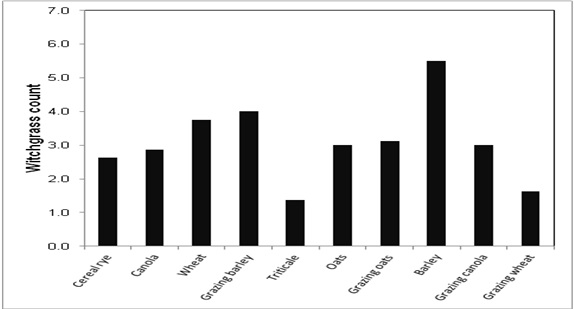
Figure 2. Witchgrass counts in plots in March 2014. Areas with no residues averaged 20 plants m‑2.
Residues remaining on plot were assessed following crop harvest. Significant differences were noted in postharvest crop residue levels in all three years (Figures 3, 4 and 5). Canola and grazing canola showed lower remaining total stubble biomass with the cereals, triticale, rye and both wheats generally providing greater stubble biomass remaining well into the subsequent postharvest season.
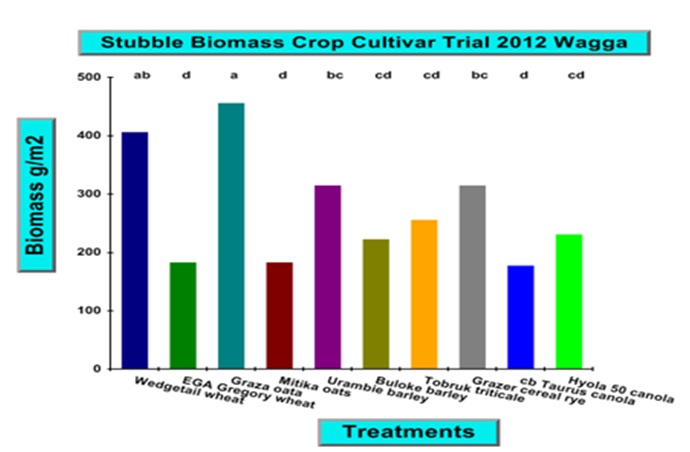
Figure 3. Crop biomass post-harvest remaining in test plots 2012 trial.
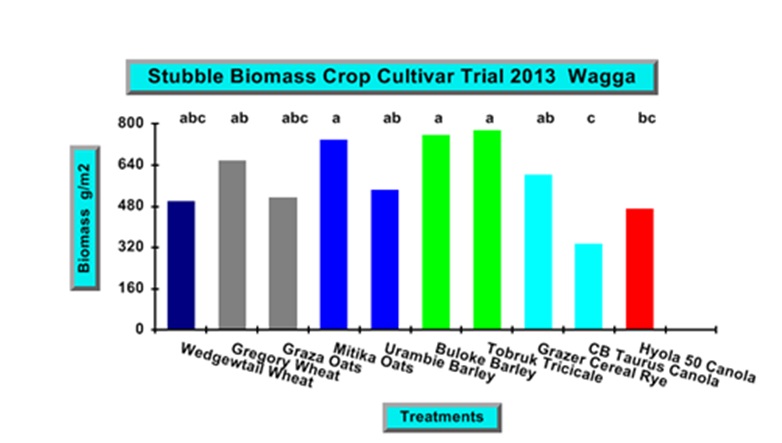
Figure 4. Crop biomass post-harvest remaining in test plots 2013 trial.
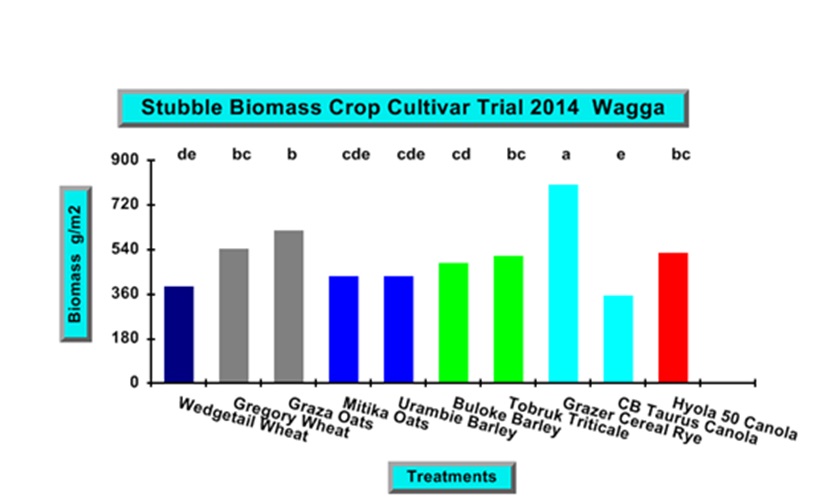
Figure 5. Crop biomass post-harvest remaining in test plots 2014 trial.
In the 2014 trial, visual weed ratings were taken on January 21, 2015, 224 days after planting. Plots were rated for percent weed control and total weed suppression on a scale of 1-10 (Figures 6, 7 and 8). Similar to 2013 and 2014, the two most prevalent weeds present were fleabane and witchgrass. Weed counts per m2 will be taken until April 2015.
Significant differences were noted in control/suppression of fleabane with Mitika grain oats and both the barley varieties exhibiting the poorest control, similar to findings observed in 2013 and 2014. Suppression of witchgrass was also poorest in Mitika oats, Wedgetail grazing wheat, and Buloke barley. The greatest total weed suppression in 2015 was found in the Graza 51 oats, Grazer rye and the grain canola, Hyola®50 (Figure 6).
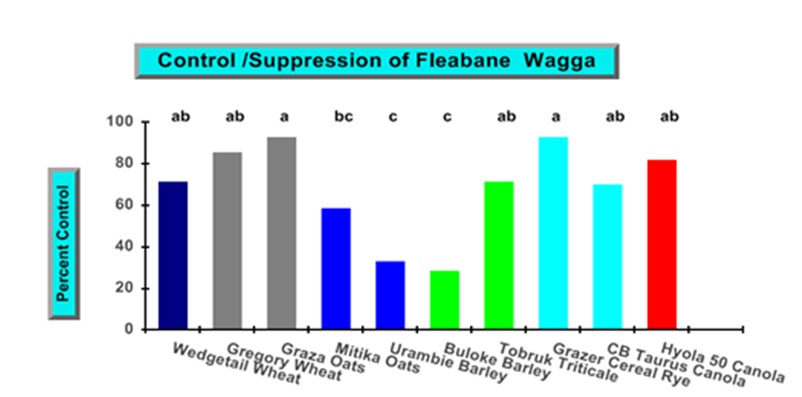
Figure 6. Data taken January 21, 2015; 224 days after planting.
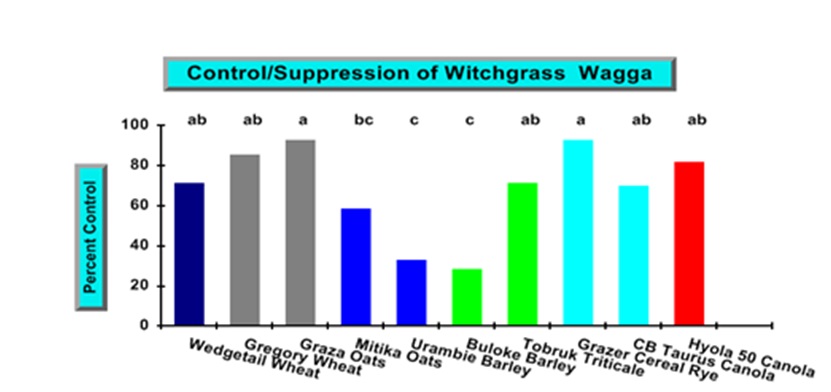
Figure 7. Data taken January 21, 2015; 224 days after planting.
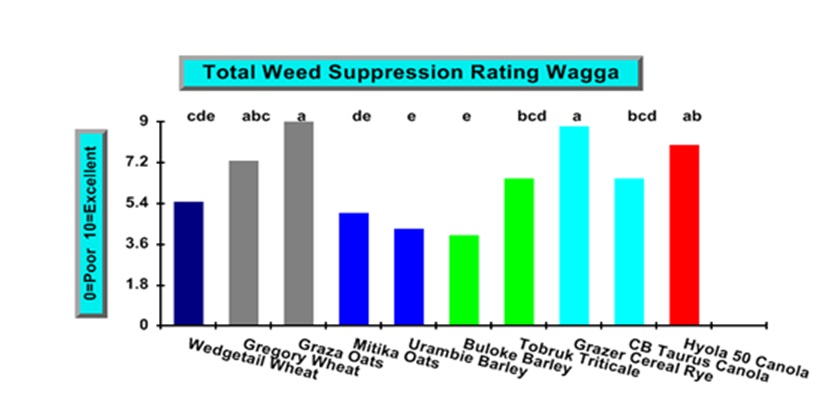
Figure 8. Data taken January 21, 2015; 224 days after planting.
Discussion
We observed clear and significant differences in weed infestation in crop and also in postharvest crop fallows associated with grain crop cultivar and species evaluated in all three years of experimentation from 2012-2015. Crops were produced in soils with low to moderate weed infestation and in the absence of residual herbicides. Crops generally proved to be competitive with weeds during their establishment and also their growth. In addition, remaining crop residues were suppressive to summer annual weed establishment, compared to borders without stubble. Some crops were clearly more suppressive of in-crop weeds, including rye, grazing and cereal barley, grazing and cereal wheat and grazing and grain canola. This is likely due to reduced light at the soil surface and competitive canopy architectures. However, following harvest, crop residues were all that remained on the soil surface, with no residual herbicides present, and residue amount remaining was crop/cultivar dependent. Residues are the source of allelochemicals and nutrients that are released over time to the soil rhizosphere from decomposition (Weston 2005). In addition, residue presence on the soil surface can alter moisture availability and soil microbial interactions (Weston and Duke, 2003).
We observed significant weed suppression associated with grazing and non-grazing wheat residues, both pre- and post-harvest with grazing wheat exhibiting significant suppression of fleabane and witchgrass up to 130 days postharvest. Grazing and non-grazing canola provided strong and significant suppression of fleabane and witchgrass for up to 140 days following harvest. Interestingly, these crops did not have as much residue remaining on the soil surface as other less weed suppressive cereal crops in the 2012 and 2013 postharvest measurements. Grazing cultivars were generally more suppressive of weeds than non-grazing cereal cultivars evaluated. Grazing oats also tended to be initially suppressive but long-term suppression of weeds until planting the following season was not always observed. Soil analyses performed in late March indicated that moisture levels were not much different among treatments, especially in 2014 during an extended drought, indicating that differences in weed establishment were not likely associated with differences in soil moisture availability among treatments (data not presented). We are currently evaluating soil samples collected for presence of isothiocyanates (ITCs) and glucosinolates associated with weed suppression in brassica spp. and hydroxamic acids present in wheat, rye or barley residues (Siemens et al. 2002 and Weston and Duke, 2003); this will determine if the presence of canola or certain cereal residues and low weed infestation are associated with higher levels of suppressive secondary products.
Our results suggest that establishment of certain cultivars or cereal crops may effectively result in both in-crop and post-harvest weed suppression, in the presence or absence of use of post-emergent herbicides during the growing season, especially in common weeds which are problematic post-harvest, such as fleabane and witchgrass. Cultivar and/or cereal crop choice is an economical form of weed management due to competition in crop and possibly other factors, such as allelopathy.
Acknowledgements
We acknowledge the support of the Grains Research and Development Corporation and R. Squire, G. Heath, S. Hildebrand, A. Sheppard, B. Ryan, N. Weston and D. Skoneczny for their assistance in data collection and analyses performed.
References
- Liebl, R., Simmons, F.W., Wax, L.M. and Stoller, E.W. (1992). Effect of rye (Secale cereal) mulch on weed control and soil moisture in soybean (Glycine max). Weed Technology 6, 838-46.
- Liebman, M. and Davis, A.S. (2002). Integration of soil, crop and weed management in low-external-input farming systems. Weed Research 40, 27-47.
- Putnam, A.R., DeFrank, J. and Barnes, J.P. (1983). Exploitation of allelopathy for weed control in annual and perennial cropping systems. Journal of Chemical Ecology 9, 1001-12.
- Scott, B.J., Eberbach, P.L., Evans, J. and Wade L.J. (2010). Stubble retention in cropping systems in Southern Australia: benefits and challenges. Graham Centre Monograph Series. No. 1. Wagga Wagga Australia.
- Siemens, D.H., Garner, S.H., Mitchell-Olds, T. and Callaway, R.M. (2002). Cost of defense in the context of plant competition: Brassica rapa may grow and defend. Ecology 83, 505-17.
- Weston, L.A. (1990). Cover crop and herbicide influence on row crop seedling establishment in no-tillage culture. Weed Science 38, 166-71.
- Weston, L.A. (2005). History and current trends in the use of allelopathy for weed management. Horticultural Science 15, 529-34.
- Weston, L.A. and Duke, S.O. (2003). Weed and crop allelopathy. Critical Reviews in Plant Sciences 22, 367-89.
Contact details
Leslie A. Weston
Graham Centre, Charles Sturt University, Wagga Wagga, NSW 2678
02 6933 2429
www.grahamcentre.net
leweston@csu.edu.au
William B. Brown
School of Agricultural and Wine Sciences, Charles Sturt University, Wagga, NSW, 2678
02 69334174
www.csu.edu.au
wilbrown@csu.edu.au
GRDC Project Code: UA00134,
Was this page helpful?
YOUR FEEDBACK
